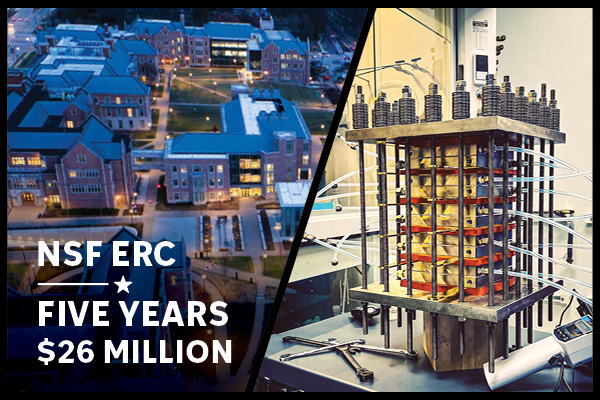
In the media: Michigan's Mighty Mackinac Bridge Has Mega Monitoring System Powered By Traffic
Sensor project will reportedly make the Mackinac Bridge the first fully instrumented bridge in the country that uses advanced and self-powered monitoring technology
Researchers from Michigan State University and Washington University in St. Louis are testing sensors on Michigan's Mackinac Bridge. The monitors are powered by traffic vibrations and can detect bridge failures before they happen, officials say.
The Mackinac Bridge is 5 miles long and connects Michigan's upper and lower peninsulas. It's an amazing feat of engineering. It's also more than 60 years old, having opened to traffic in November 1957. More than 600,000 vehicles crossed the span in July. So you can imagine the need to keep it safe and maintained.
The first of 20 prototype sensors were installed on the massive suspension bridge in 2016 as part of a demonstration project sponsored by the Federal Highway Administration that also includes the University of Southern California. The first set of sensors proved to be durable and functional, and researchers began another phase of testing with the installation of up to 2,000 of the tiny devices, according to Michigan State University (MSU) officials.
They recently uploaded a short video on the work.
The sensor project will reportedly make the Mackinac Bridge the first fully instrumented bridge in the country that uses advanced and self-powered monitoring technology. The "Mighty Mac," as it's known to Michiganders, is the fifth longest suspension bridge in the world.

MSU notes that tens of thousands of bridges across the United States are deteriorating, which of course creates potentially dangerous conditions. "The successful large-scale deployment of this low-cost sensing technology could dramatically transform the economics of bridge preservation and management and improve the serviceability and safety of bridges," the university notes.
The Mackinac Bridge Authority, which keeps the bridge going, adds that the latest phase of testing with up to 2,000 sensors "will explore the logistics of a large-scale deployment and provide useful monitoring data" to the authority.
“There is huge potential and benefit for sensors like these on structures beyond the Mackinac Bridge, and we’re excited these prototypes are being tested here,” Bob Sweeney, executive secretary of the Mackinac Bridge Authority, said after the first prototypes were installed. “We meticulously maintain and inspect the bridge each year, and sensors like these will complement our efforts, giving us even more information on the bridge’s condition to help keep it well-maintained and safe for many years to come."

After the prototypes, new and improved versions of the self-powered sensors were developed as part of the National Science Foundation's Cyber-Physical Systems program. As part of the project, other sensors also were installed at bridges in the Washington, D.C., area and Virginia.
Michigan's Mackinac Bridge will be closed to vehicle traffic on Sept. 2 for an annual Labor Day bridge walk. If you've ever taken part, or driven a car across this bridge, you know it swings or sways in the wind. That's part of the design.
Washington University researchers add that the sensors are connected to the cloud, "allowing them to interface with a wireless network so that their information can be accessed quickly and efficiently in case of an emergency such as an earthquake, flood or even terror attack."



